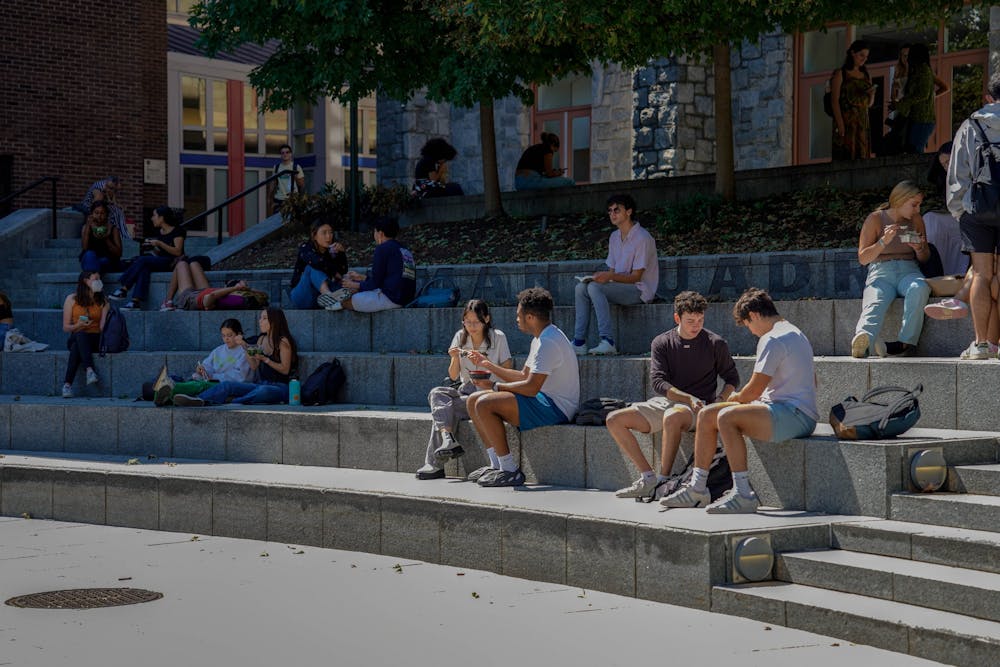
Penn's transfer students — which comprise the second-highest transfer student community in the Ivy League — report finding resources and community despite a challenging transition.
Every year, Penn admits around 160 transfers, second only to Cornell. While schools such as Harvard and Princeton usually enroll under 20 transfers, students said that the large size of the Penn transfer cohort has allowed for better support infrastructure and a better bonding experience.
“I’m proud of the size of the transfer cohort at Penn. We enroll well over 100 every year,” John McLaughlin, vice dean and director of admissions wrote in an email to The Daily Pennsylvanian.
“We explicitly preserve some space in our community to welcome transfer students because they enrich our campus with their varied experiences and interests,” McLaughlin added.
Penn's infrastructure to support transfer students includes the Transfer Student Organization — a student-founded group that aims to help students adjust to Penn both socially and academically. It offers resources such as a mentorship program, events throughout the year, and tools to help keep track of academic progress.
College sophomore Gabe Lipschutz, who is a transfer student from Washington University in St. Louis, said he was able to meet new people during the activities TSO held during New Student Orientation. He added that one of the Transfer Peers Helping Integrate New Students is his resident advisor, and the two have become close.
However, he said, the transition is not as smooth as the typical first-year experience.
“Everybody already has their friend groups, and you just have to kind of mingle and get involved,” Lipschutz said. “So it’s very helpful to have a few friends that I met during transfer week and a few friends that already go here from my high school.”
College sophomore David Deng — who transferred from the University of Texas at Austin — agreed that the transition presented challenges, but TSO was a source of support. Specifically, he said, transferring credits has been "a pain."
"The biggest adjustment for me is getting used to PennNet’s Wi-Fi speed and the food at the dining halls, which I definitely took for granted at UT," he said. "Honestly, I found the Transfer Student Organization has made settling in relatively painless, and I could not ask for better roommates. Just last week, our transfer floor had an amazing time at the cinema watching 'Amsterdam'."
Being a transfer student was especially difficult during the pandemic, according to Nursing senior Michaela Ryan, who transferred from Adelphi University in fall 2020, a semester when Penn’s campus was shut down due to COVID-19.
“The only socialization I had was that after Spanish classes we would play 'Among Us' together,” Ryan said. “In spring 2021, I was on campus, but I had only met people in nursing clinicals and labs. I really feel like my first year at Penn was the fall of 2021.”
Despite the difficulties, Ryan still feels grateful for the friendliness of her fellow classmates and the close-knit nursing community.
In addition to blending in socially, some students reported finding Penn’s academic opportunities both more fulfilling and sometimes more challenging.
Lipschutz, who intends to pursue a physics major, finds that although his classes are more challenging than the ones at his old school, he can gather more resources here at Penn.
“There are more chances to communicate with faculty and staff one-on-one,” he said.
For Deng, the academic opportunities he saw with Penn's philosophy, politics, and economics major were a major factor in his decision to transfer — along with exploring other parts of the country, as he had previously lived in Austin, Texas his whole life. Lipschutz said that he enjoys being part of a more diverse student body, especially in terms of academic interests.
“[Washington University] was a great school for me in many regards, but I thought that the student body in terms of interests and majors and type of people were not really up my alley. It was a lot of pre-med and business people,” Lipschutz said.
Looking forward after Penn, Ryan hopes to make a difference in researching and eliminating health care inequity.
“I noticed a lot of health care inequity, a lot of abuse in the health care system. And I was like, ‘Oh, I really want to do research and solve some of these issues,’” Ryan said.
For Ryan, who is passionate about nursing research, making the decision to transfer was an easy one.
“I always wanted to go to Penn, which has the best nursing school in the world,” she said.
The Daily Pennsylvanian is an independent, student-run newspaper. Please consider making a donation to support the coverage that shapes the University. Your generosity ensures a future of strong journalism at Penn.
Donate







